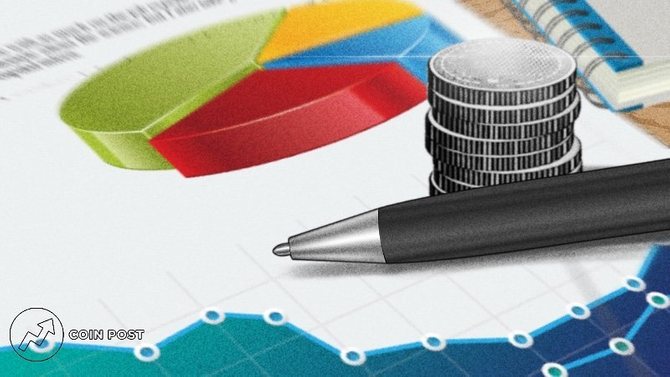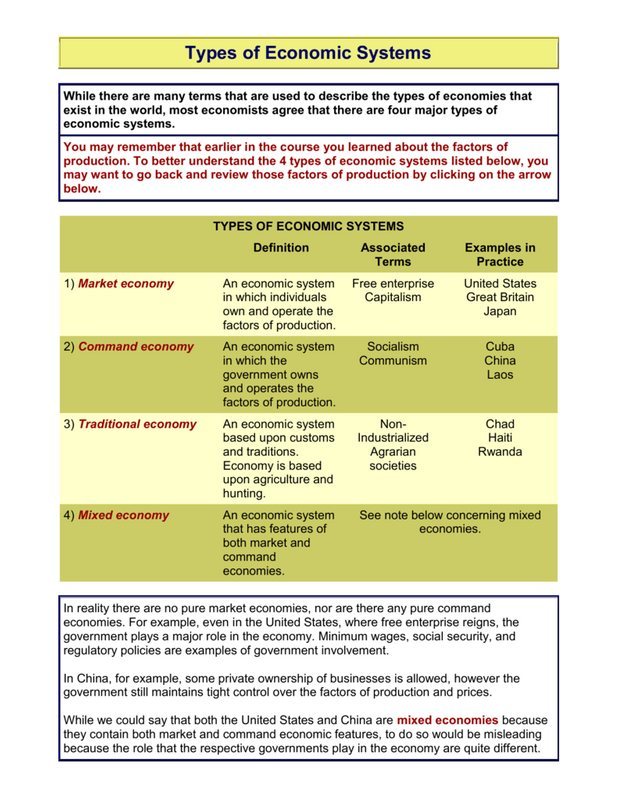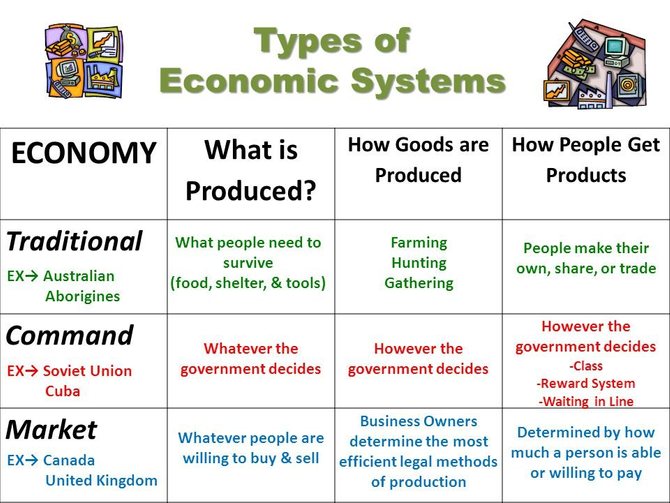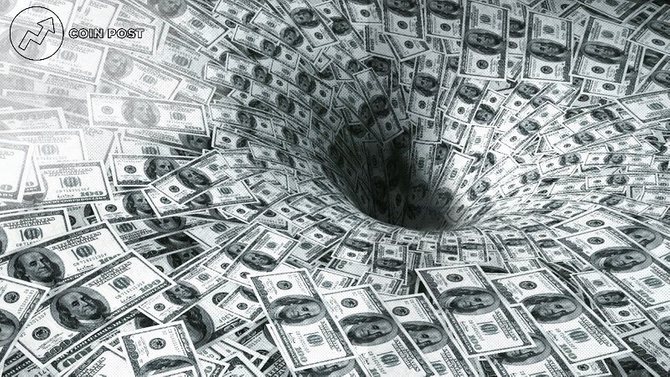
In modern society, economic activity associated with the redistribution of resources, production and consumption of goods is conducted according to several models, differing in the level of freedom of entrepreneurship, the ratio of private and state property, as well as the influence of the authorities on these processes. We are talking about the types of economies that have developed in the modern world, defining the roles of the state and the individual in them.
In this material, we will talk in detail about the main types of economic systems, their features, efficiency, pros and cons, and also give a comparative description of some of them.
- Types of Economic Systems
- Traditional Economy
- Market Economy
- Command Economy
- Mixed Economy
- Table of Types of Economic Systems
- Market and Command Economy
Types of Economic Systems

An economic system is a set of interrelated economic processes and property relations that have developed within the framework of a society or state.
Depending on the constructed model of resource allocation, production regulation, exchange of results of economic activity and their consumption, the economy can be traditional, market, command or mixed.
Each of these systems has its own distinctive features, which are determined by fundamental economic issues:
- What products, in what quantities, in what way and for whom should they be produced?
- Is the system able to adapt to change?
- Who owns the main production factors and who controls them?
Traditional Economy

The traditional economy is the oldest of the currently existing types of economy, the main one of which is natural production with a noticeable preponderance in the sphere of agriculture. All processes in it take place under the influence of traditions and customs that have developed over the centuries.
The introduction of new technologies in societies with traditional economies is very slow and manual labor still dominates it, and instead of money, mutual exchange of goods or services (barter) is often used.
At the same time, the stratification of society into castes and clans is clearly expressed, in which the elders are responsible for making important economic decisions. And because the emphasis is on respect for custom, the economy is developing little or no development at all.
In addition to agriculture, small-scale production, represented by handicraft farms, which are most often owned and run by individual families, occupies an important place in the traditional economy. The authorities in such countries are actively involved in the economy, engaged in the redistribution of resources and national income.
In its pure form, traditional economics is now quite rare, but its predominance is still noticeable in the underdeveloped countries of Africa, Asia and Latin America.
Market Economy

A market economy is a type of economic system, the key elements of which are the predominance of private property, competitive entrepreneurship and free pricing. In countries with such an economy, the main "players" are producers of products and their consumers, and the state plays the role of a legislative regulator that has a limited impact on the market.
At the same time, they can freely choose an industry for creating a business, enter into contractual relations with other entities (suppliers, distributors, etc.) and, in fact, decide what, for whom and in what volumes to produce.
A market economy is characterized by an orientation towards the final consumer. Since there is fierce competition in all industries, manufacturers have to constantly expand their product range, improve its quality and revise prices in order to ensure demand for it and conquer its share of the market. For the same reason, they have to master and introduce new technological developments.
Also, the main features of a market-type economy include the circulation of most of the money supply of the state in private circles, a variety of types of entrepreneurship and administrative independence of producers.
The market model of the economy is inherent in most modern developed countries, for example — the USA, Japan, Sweden, Germany and some other states of Western Europe.
Command Economy

A command economy is a type of economy in which production regulation and resource allocation are centralized. At the same time, there is no freedom of entrepreneurship and a competitive environment, and all economic activities of the company are carried out in accordance with the plan drawn up by the authorities (hence the alternative name — the planned economy).
It also manages pricing and determines production volumes. Since there is no competition, the range of goods is rather narrow, and their quality is not very high. Also, the command economy is often accompanied by a deficit for certain categories of products in demand among the population, infusion of a significant part of the national budget into the military-industrial complex and weak diversification of production areas.
The command-type economic system was widespread in the 20th century in a number of socialist states (USSR, Cuba, China), and now it continues to exist almost in its pure form in the DPRK.
Mixed Economy

A mixed economy is a scheme for organizing economic activity, which is characterized by the combination of all three main types of economic activity with different levels of their prevalence.
In most cases, we are talking about a command economy with elements of a market economy, or vice versa — a market economy with shades of command.
In countries with a mixed economic system, free enterprise is most often encouraged, there is healthy competition between market participants, and both private and state forms of ownership are widespread. The state is taking antitrust measures, redistributing national income and fully controlling only a few high-profile industries (military, nuclear, etc.).
The most viable and efficient mixed economy models are found in Japan, Germany and Sweden.
Table of Types of Economic Systems

If we compare the listed types of economic systems, it is possible to highlight the characteristics that are characteristic of each of them, and also to determine what is their difference in a number of common parameters. The easiest way to do this is if the types of economy are presented in a table.

Another convenient option for comparing types of economic systems is in a table with characteristics presented as answers to the main questions of the economy.

With the help of such a breakdown of data, it is possible to visually compare the economies on the most important aspects.
Market and Command Economy

If we compare the command and market economy, then the last is considered more effective for the development of society and improving the quality of life of an individual who receives a lot of opportunities for self-realization.
With a command economy, the difference between strata of society is much less noticeable and the population is provided with jobs. But with regard to the quantity of products produced, there is often a shortage of goods in planned economies. In addition, there is widespread corruption, restriction of the rights and freedoms of citizens, scientific and technological progress is hampered.
As you can see, both market and command economies have their own advantages and disadvantages, taking into account that you can try to create a business model that is superior in efficiency to each of them. In principle, this is what happens in some countries with mixed economies, where the market type is taken as the basis, but there are still elements of the command.
Cash Flow: Formula, Types, How to Calculate It


